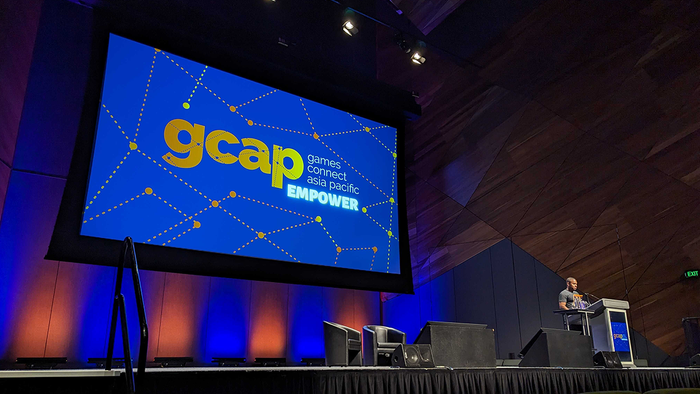Pyramid of Play: Human’s needs as layers of gameplay
The game user is a human, with needs. Understanding those needs helps the game designer to provide adequate game mechanics or feature to successfully fulfil the needs. Thus, keeping the user as a player, inside the game but also thinking about it.

Level designers use and abuse of human’s basic needs, especially of security, to organise the game space in dedicated areas. They provide to the character resources, shelter, etc. in order for it (him or her or undetermined) to go further into the game. Game designers could use the same, by applying it to game mechanics and/or features.
As humans seek to fulfil each of the need in their “real life”, players will also seek to find them in their “virtual life” through the character they embody. Thus, game designers have to think about answers – game mechanics and/or features – to each of the needs.
First, I will do a brief overview of the Maslow’s Pyramid of needs. Then I will talk about the type of play per each level of the pyramid. And I will explain further the consequences in term of time, players, story & experience, of the pyramid’s components.
Maslow’s Pyramid
I will base my explanations on the Maslow’s pyramid with 6 levels.

Each level is a ‘need’ that humans are looking to fulfil. They can’t access the level above until after having the need being satisfied.
Physiological needs are” the physical requirements for human survival”, in order to function properly on a daily basis;
Safety needs are either personal (integrity), or financial, or health related, and let the human to ‘survive’ on long term;
Social belonging needs are linked to the acceptance in a social group, to a sense of being part of one (or more): being liked, loved;
Esteem needs is the answer for every human to feel respected, to have a ‘value’ to the others – “This may include a need for status, recognition, fame, prestige, and attention”;
Self-Actualization is the need for an individual to be perceived as the most that one can be, an ideal in a field – family, professionally, physically, etc.;
Transcendence is a will to be significant to human beings in general, an inspiration for the future generations;
Thus needs differ in term of time – from daily to centuries - as well as of people impacted – own to human genre – as the higher we go in the levels of the pyramid.
Type of Play
Human’s needs and player’s needs are linked.

For each Maslow’s needs, an appropriate type of play should provide an answer.
Pico-Play: the game mechanics and/or features here should be related to the usual and most basics actions that the character should perform in order to stay alive – often atomic actions, ‘screen’ based -: ex: movement for Mario, fight in Bayonetta;
Mini-Play: includes the game mechanics and/or features that are used during the levels or maps, that help the character to survive from levels to levels, to go further: ex: succeeding the pipes mini game in Bioshock to gain ammos;
Micro-Play: in order to finish the game, the players will have to rely on those game mechanics and/or features: ex: developing the character’s statistics and skills in Diablo 2;
Macro-Play: includes the mechanics and/or features that could be used by the players to ease the character’s journey, there are optional but help: ex: collecting eyes & feathers in God of War;
Mega-Play: we talk here about potential power/super play driven by the game: ex: doing stunts in Battlefield or in GTA, etc.
Meta-Play: outside of the main in-game gameplays, the meta-Play is about what players can do in order to ease their next game sessions: ex: building decks in Magic the Gathering, planning turns in Civilization 5, thinking build orders in Starcraft 2, evaluating skills’tree in MMORPG, etc.
Time of Play
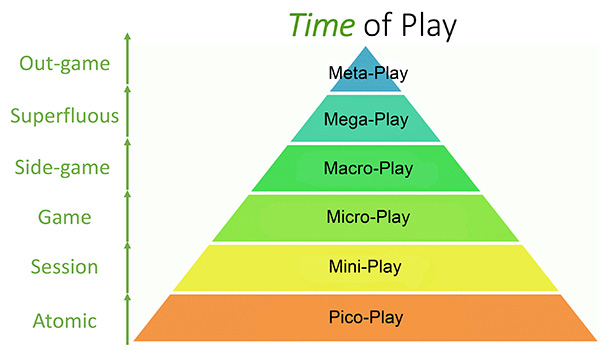
As quickly mentioned before, each type of play is on a different time.
Pico-Play is on an Atomic time, actions based – mashing buttons or keys to act – inside mostly of a screen, a small and limited area of play;
Mini-Play is more level and/or Session based, occurring only several time: depending on this number, the game could be considerate as survival if too few;
Micro-Play is regular, all along the Game (main objective/storyline), either decided by the player (anytime) or by the game (system based or map/level based);
Macro-Play is usually fulfilling the gaps in the main objective/storyline, acting like a Side-game, helping the pacing of the game;
Mega-Play is having fun with the game itself (physic, level design, etc.), but not by it (objective/storyline), a Superfluous player-driven experience: finding a new own purpose;
Meta-Play is happening Outside the game (aka not playing it) itself but could be helped by it (with the tools provided): ex: runes & masteries pages in League of Legend;
Players of Play
As for the human’s needs, the type of Play doesn’t impact the same categories of players.
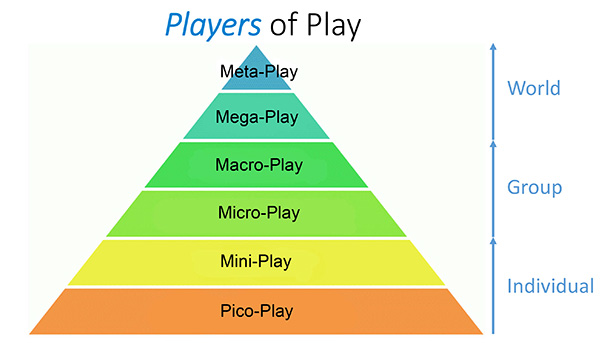
Pico & Mini-Play affect the player itself and categorized them in their play style;
Micro & Macro-Play make a distinction (groups) between the one who have not finished the game and those who have, as well as distinguishing the strategies, tactics and roads taken by them;
Mega & Meta-Play amaze and inspire players and non-player (world), teaching them about unexploited potential of the game;
Game Story
Story and game mechanics should be linked and support each other, especially for the main story. Therefore, game designers have to know also the implication of the type of play with the story.
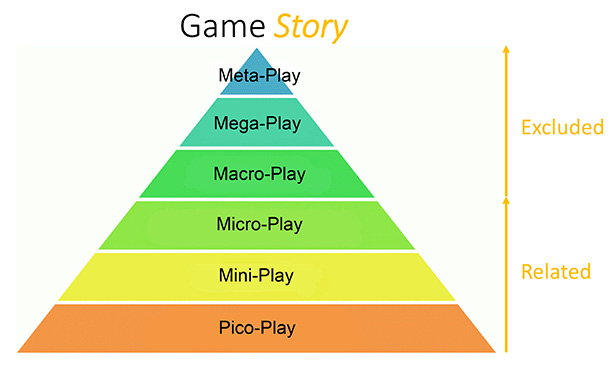
Pico, Mini & Micro-Play are related to the story: game mechanics should be explained by the ‘story’ (universe, character’s background, etc.) and used to complete it: none should appear or disappear due to circumstances;
Macro, Mega & Meta are ‘excluded’ from the story: the macro helps it but none should have an impact on it;
Game Experience
Game designers should also consider the levels in the point of view of the experience provided, from the Player Experience (PX) to the User Experience (UX).

The more the type is PX oriented, the more the game designer should lock it to no interpretation, nor creativity in the use [system oriented]. The more the type is UX oriented, the more the opportunity should be given to the player to express himself, to make choices [content oriented].
To conclude
Game Designers shouldn’t only be concerned about their game functioning (and looping) but also about the players, the way they play the game, what they are looking for. Thus, this framework could help them not to forget game elements and keep retaining players all along the game, and furthermore, bring them back to it.
Also, due to the Maslow’s Pyramid reference, the schemes are following the same representation. However, the following scheme could also be applied.
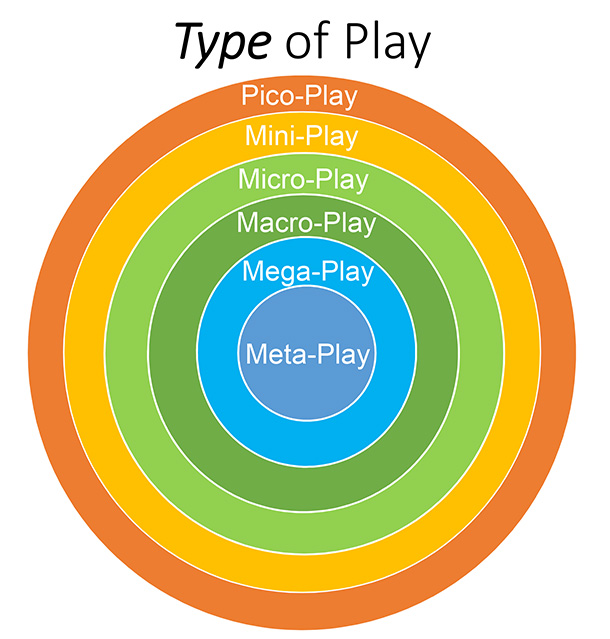
Bibliography
“An Architectural Approach for Level Design” de Christopher W. Totten;
“Game Design Workshop” de Tracy Fullerton;
“Game Development Essentials – Game Mechanics” de Troy Dunniwayet Jeannie Novak;
Read more about:
BlogsAbout the Author(s)
You May Also Like





